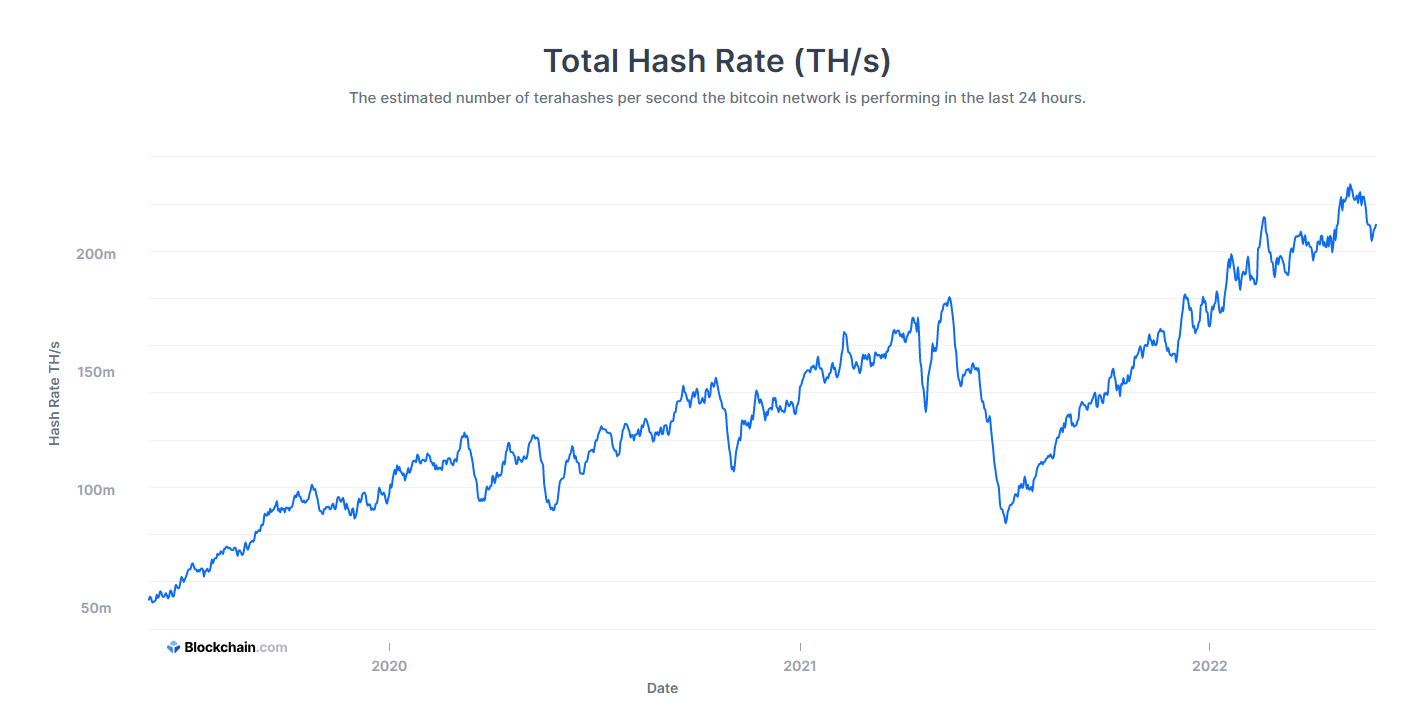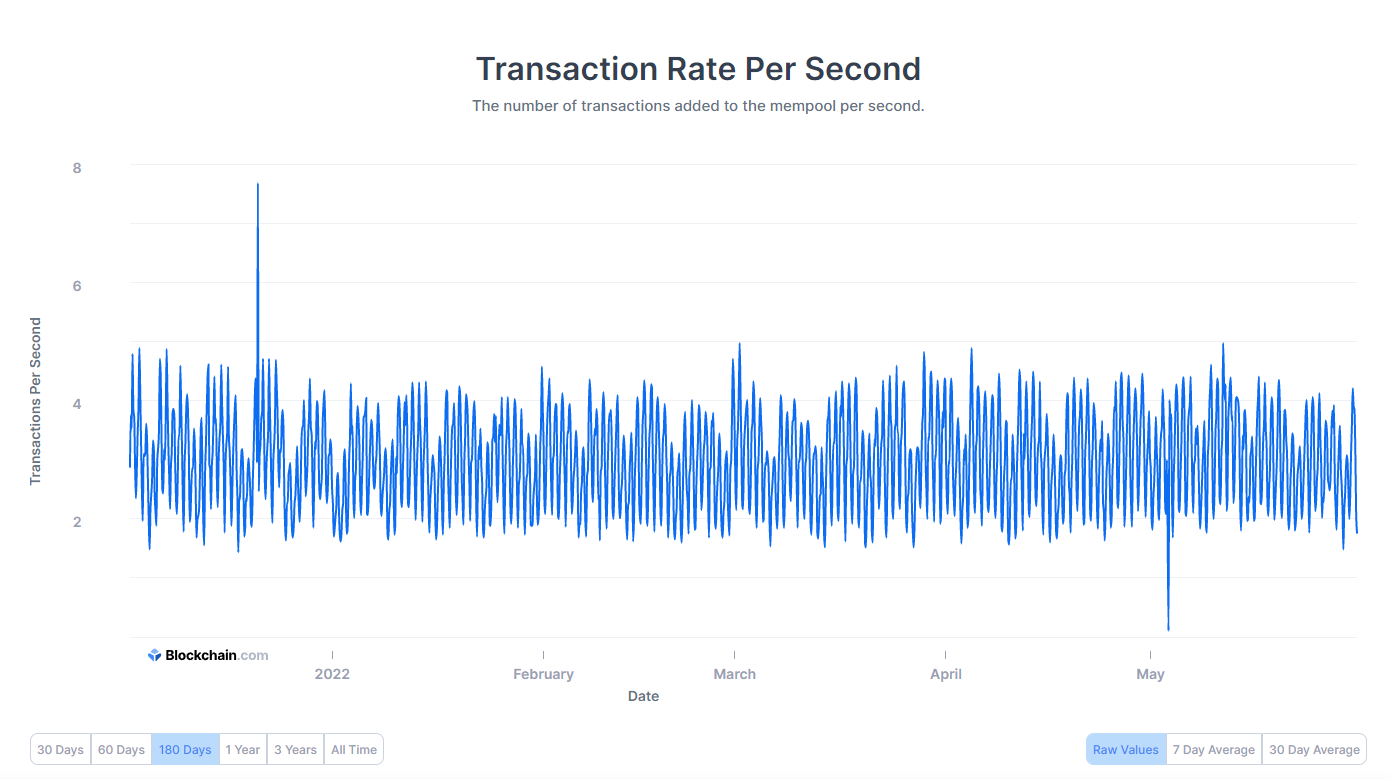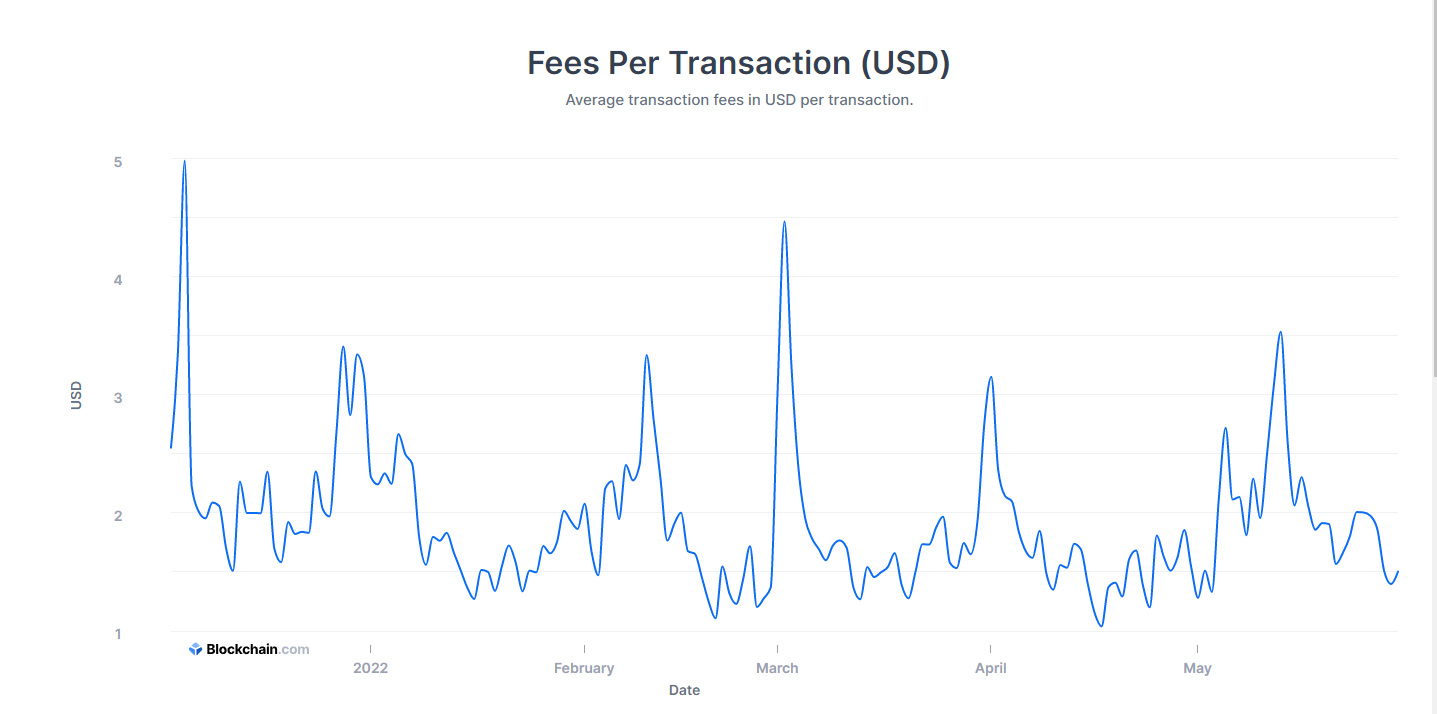Satoshi is at the forefront of cybersecurity
Small technical point to start but essential to understand. A transaction on the Bitcoin blockchain only really exists if it is written in a block and this block is attached to the previous block. So far nothing new. The Proof-of-Work mining system is not only used to decrypt the public and private keys of issuers in order to verify that they have the funds, but also to create an unfailing resilience against attacks. potential hackers. The chain being decentralized and therefore shared between all members of the network, it would be necessary to create blocks faster than the authentic miners to succeed in defrauding (in other words, it would be necessary to have a gigantic computing power). The longer the chain lengthens over time (as the number of transactions accumulates), the more difficult fraud attempts become because the entire chain would have to be recreated in this case, which is, with technologies known to date, impossible.
The recording of a block must obligatorily induce a certain cost because otherwise a hacker could recreate the entire blocks without any expense. To fully understand Bitcoin, it is essential to integrate the fact that the energy cost of validating a bitcoin transaction is totally artificial and created by the underlying algorithmic code of the network. But this energy cost imposed by the code is not useless even if it is artificial. This cost serves as the basis for the security of the protocol. This cost is intimately linked with the hash rate of the network.
Hash rate, the sinews of war
A transaction published on the Bitcoin network must be validated and secured in a block by the miners, so it is these computers, called “network nodes” that will take care of it. There are almost 15,000 today operating around of the globe.
Number of nodes on Bitcoin
Source: Bitnodes
A transaction will be grouped with several transactions in order to constitute a block with a weight of 1 megabyte. In order to add this block to the Bitcoin blockchain, miners will have to perform a very complex mathematical calculation and the first to find the solution will register the block and will thus be rewarded in bitcoins (6.25 BTC per block). The hash rate measures in a way the difficulty of calculation to be carried out by the miners to find the solution to this cryptographic puzzle. One could make the following analogy to illustrate the hash rate:
- Low hash rate: Toss a coin in the air as many times as possible until it lands 3 times in a row on the tails side.
- Average hash rate: Toss a coin in the air as many times as necessary until it lands 6 times in a row on the tails side.
- High hash rate: Toss a coin in the air as many times as necessary until it lands 9 times in a row on the tails side.
As you will have understood, the hash rate does not remain fixed so as to maintain an average of 10 minutes to mine a block. Ten minutes was specifically chosen by Satoshi as the ideal compromise between the time it takes to open the block and the amount of work required to put the block on the chain. For keep this mining duration, approximately every 2016 blocks (i.e. every 14 days), the mining difficulty of a block is readjusted according to the number of miners to operate. Thus, even if a massive influx of miners presents itself, the increase in the difficulty of mining (expressed with the hash rate) makes it possible to maintain the duration of 10 minutes of recording of a block.
To put it simply, the more miners who try their luck to validate a block, the more the hash rate increases, the more difficult it is to validate a block. Hence the frantic race of miners to have more and more powerful hardware in order to optimize their chances of registering a block and therefore being rewarded in bitcoins.

Hash rate on bitcoin
Blockchain.com
This increase in hash rate reflects the increasing energy consumption of computers to find the solution of the block. Let’s go back to our coin analogy:
Scenario 1: 3 individuals constitute all the minors of the network. The first to land the coin 3 times in a row on tails will register the block and be rewarded in BTC.
Scenario 2: 30 individuals make up all the miners in the network. The first to land the coin 30 times in a row on tails will register the block and be rewarded in BTC.
It is easily understood that the energy waste will be greater in scenario 2. We understand with this analogy of the Bitcoin mining system that the increasing energy consumption is necessary to ensure a recording duration of 10 minutes per block at the as miners connect to the network.
Hash rate is ultimately the level of mining complexity and a measure that guarantees the security of the blockchain. An increase in this hash rate is synonymous with an increase in the number of miners and therefore an increase in its invulnerability because the difficulty of mining becomes increasingly important and more and more miners verify the blocks of transactions. It is therefore becoming increasingly difficult to defraud and attempt to take control of the Bitcoin network.
Security at the cost of low speed and high cost per transaction
Do not mix speed and haste
A Bitcoin transaction occupies between 0.2 kilobytes (kb) and 1 kilobyte in a block. If we take an average of 0.5 kilobytes as the average size per transaction and know that a block can contain 1 megabyte, we can easily know how many transactions a block can contain:
- 1000 kB / 0.5 kB = 2000 transactions per block (i.e. every 10 minutes)
Or in transactions per second:
- 10 x 60 = 600 seconds
- 2000 transactions / 600 seconds = 3.33 transactions/second
Which is of course an average. But if we trace the history of transactions/second of the Bitcoin network, we find ourselves not far from this average:

Bitcoin transactions per second
Blockchain.com
I will not buy my bread in bitcoin
Using the Bitcoin network to make transactions also involves paying a fee per transaction.

Bitcoin transaction fees
Blockchain.com
Transaction fees vary depending on network congestion. The greater the volume of demand, the more these fees are likely to increase and vice versa downward when volumes decrease. In this context, we understand, on the one hand, that it is difficult to make daily purchases by paying relatively high transaction fees, and on the other, that the execution capacity of 3.33 transactions/second is not viable in a world where the number of transactions is exploding. Buying a croissant with a transaction cost varying between 1.5 and 5 dollars and with a transaction validation time of at least 10 minutes is not competitive.
Safety takes precedence over other parameters
The issue surrounding the speed and security trade-off is at the heart of Bitcoin’s proof-of-work mechanism transaction validation and security process. By forcing players to respect a block validation period of 10 minutes, Satoshi Nakamoto wanted to maximize network security above all by adapting the mining difficulty via the hash rate which represents the adjustment variable for this difficulty. As we have seen, it is unlikely, if not impossible, that Bitcoin, in the current state of the network, can become an everyday payment network. It is too slow and too expensive. On the other hand, the absolute security of the network cannot be questioned and could to some extent be used for critical transactions such as the purchase of a car or real estate.
But Bitcoin does not remain frozen on its achievements
The Lightning Network acts as the second technological layer for Bitcoin. In other words, these are transactions that are carried out outside the blockchain via payment channels between several actors. This second layer allows increased scalability by recording transactions according to their degree of criticality once all the exchanges have been carried out between the actors. By analogy, the Lightning Network can be compared to the clearing mechanism of banking systems. If bank A owes 15 euros to bank B, and if bank B owes 20 euros to bank A, then bank B will pay 5 euros to bank A in order to avoid a double payment. This makes it possible to record only on Bitcoin the final transaction between the different actors. In other words, it is a question of taking advantage of the absolute security of the Bitcoin network while taking advantage of the scalability of the second Lightning Network layer to carry out transactions. Don’t worry, I’m concocting an article dedicated to the Lightning Network that will explore this second layer from every angle. To be found very quickly in the columns of Zonebourse.
